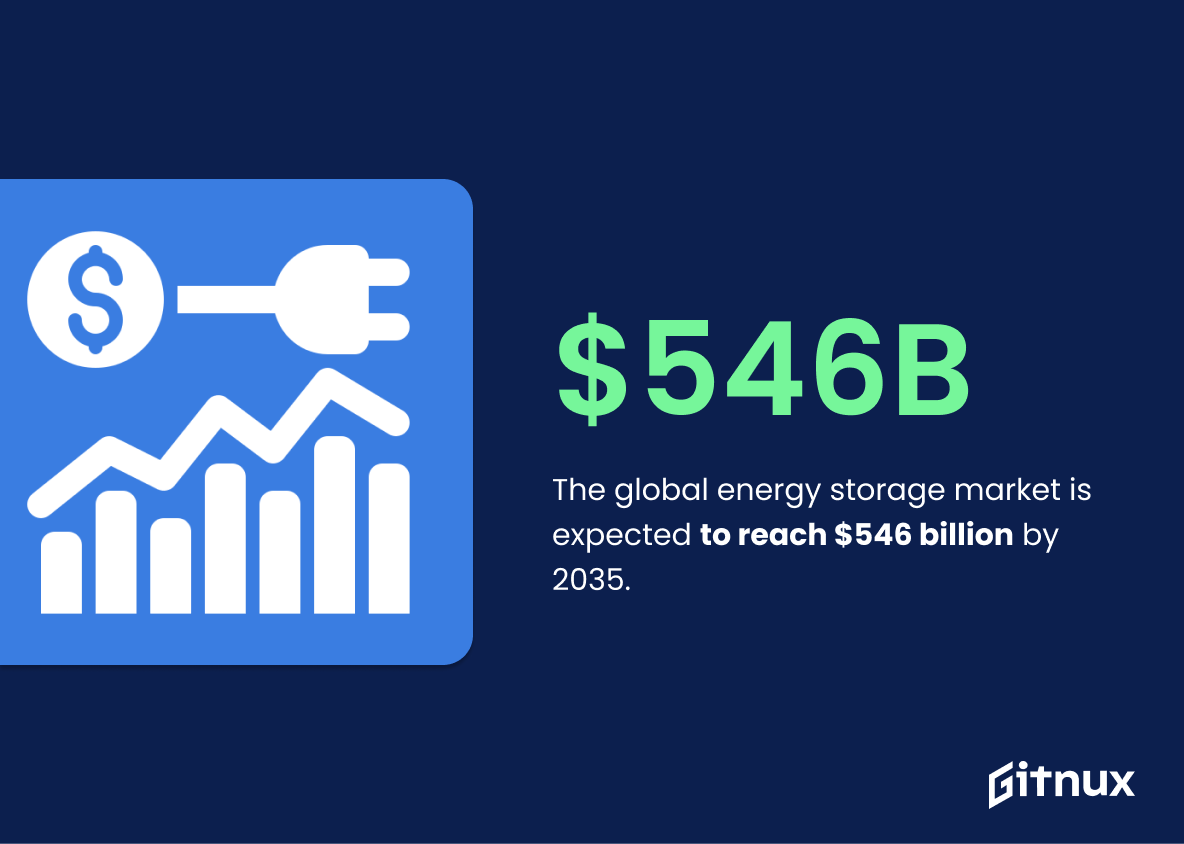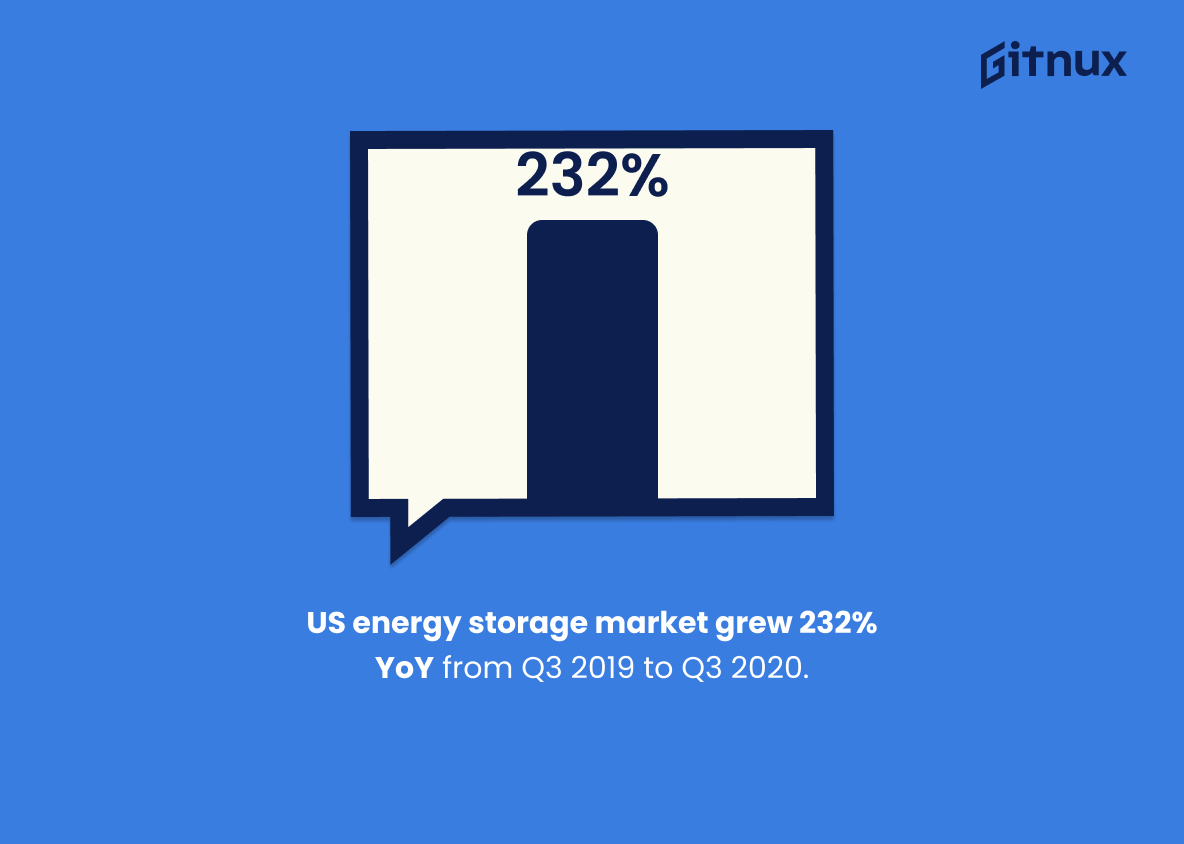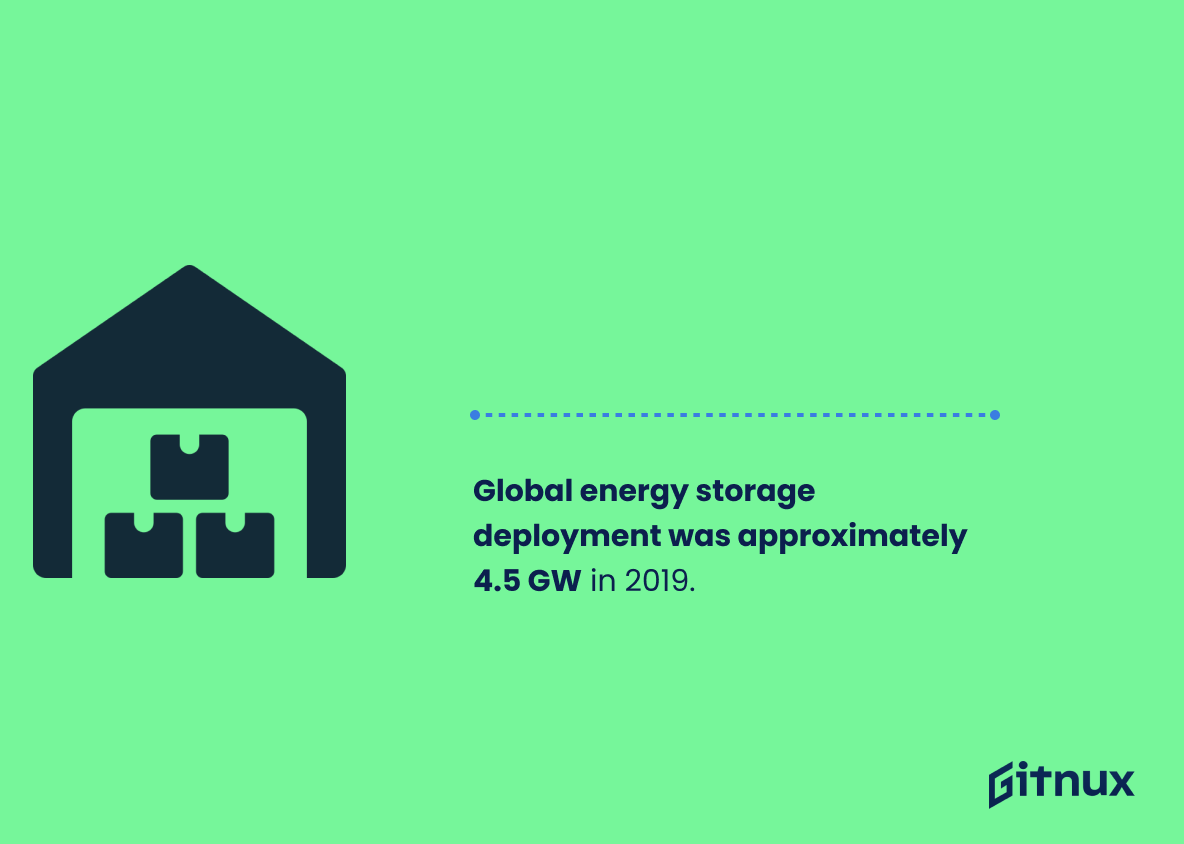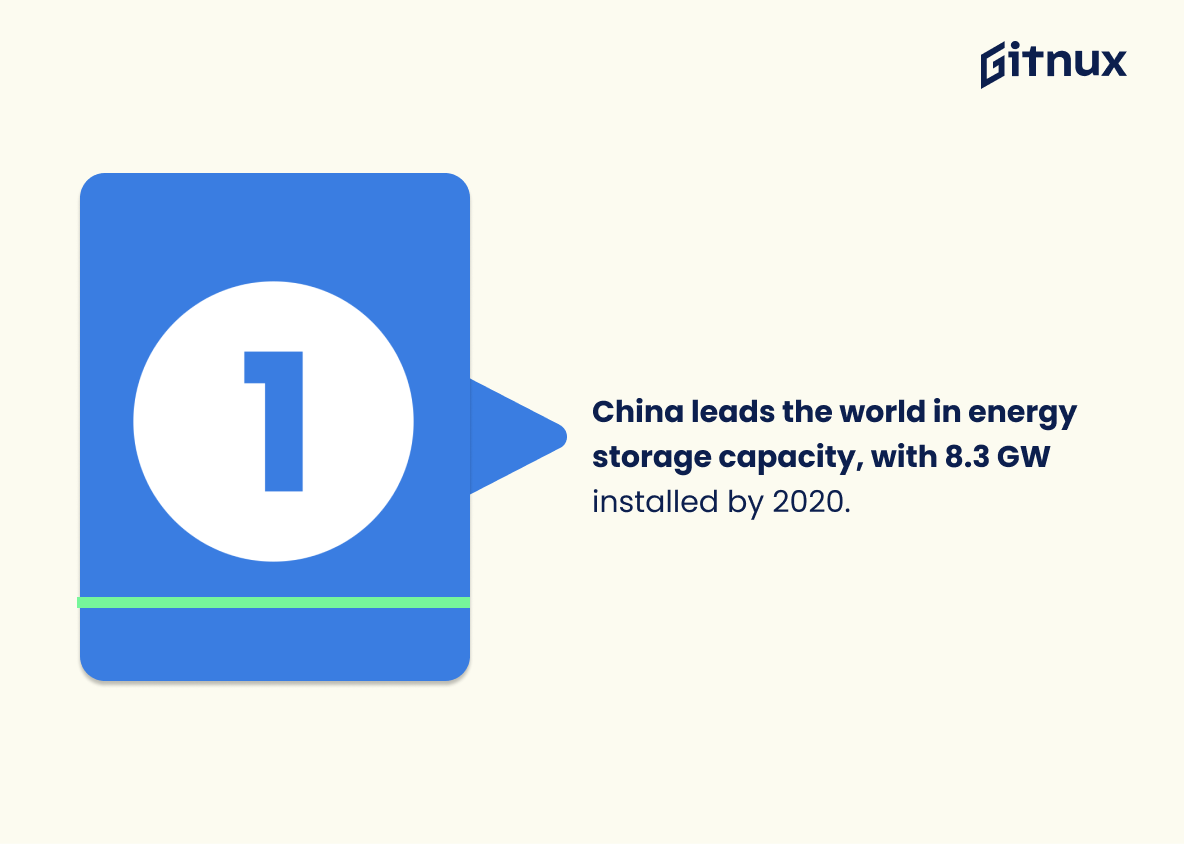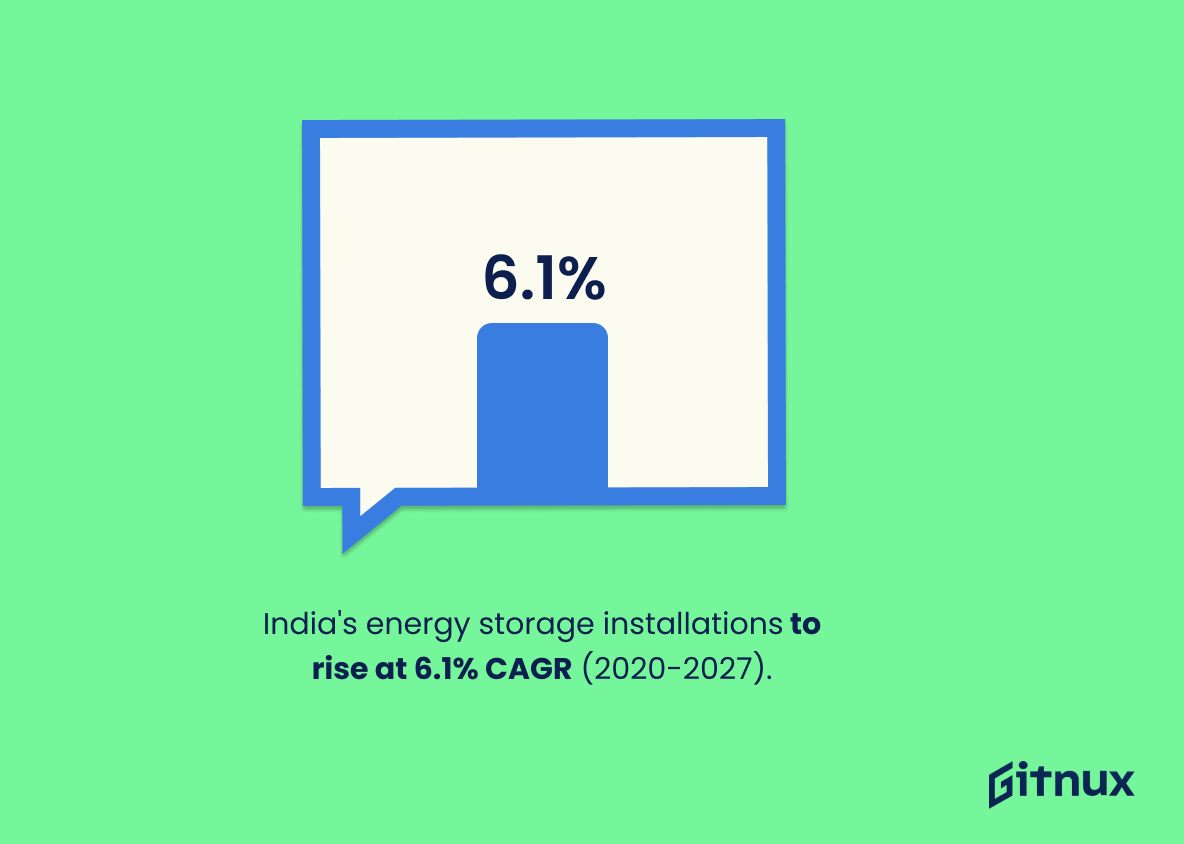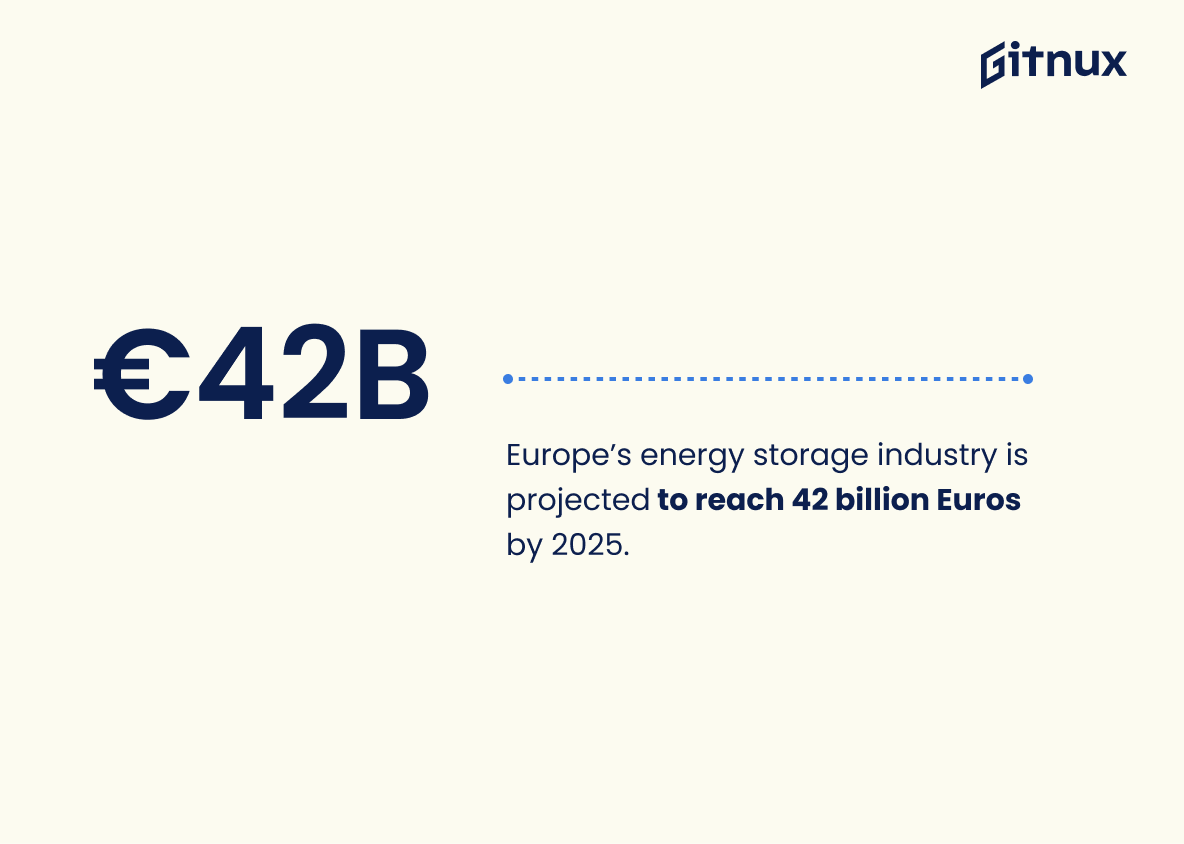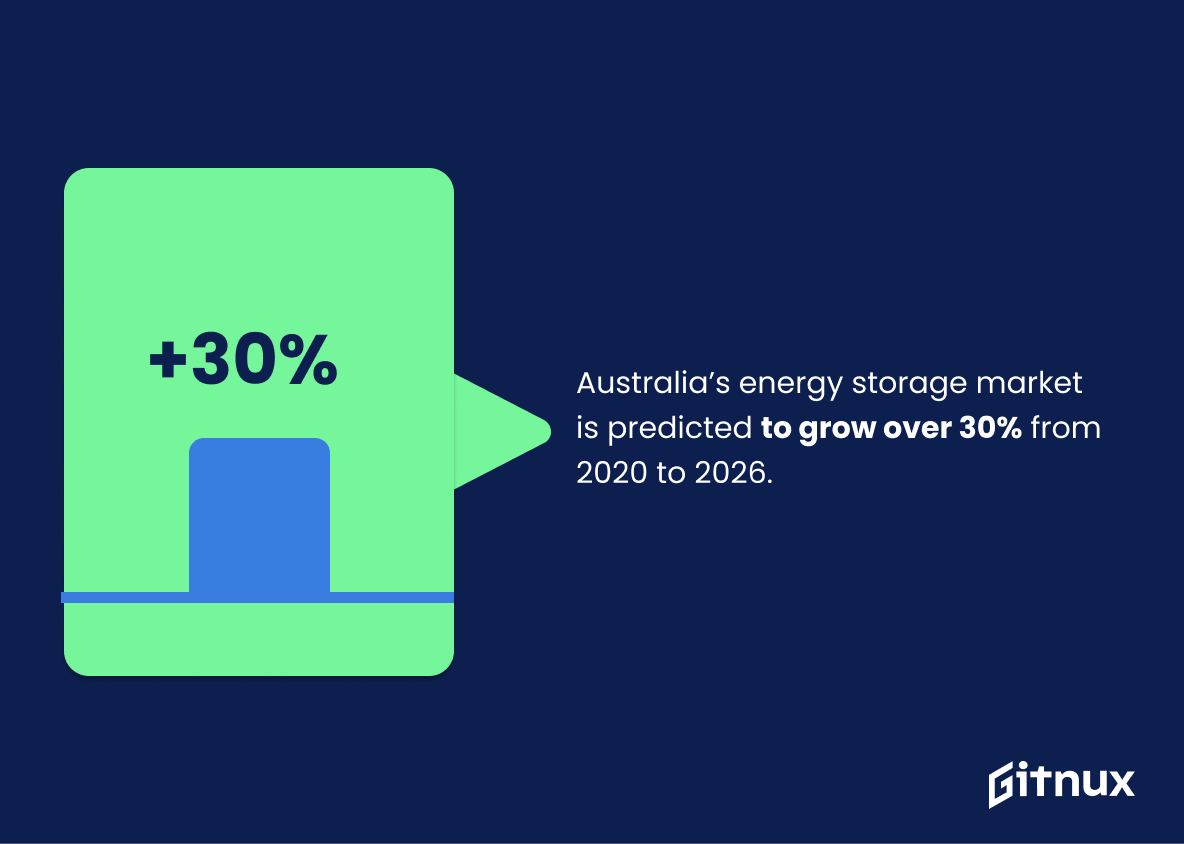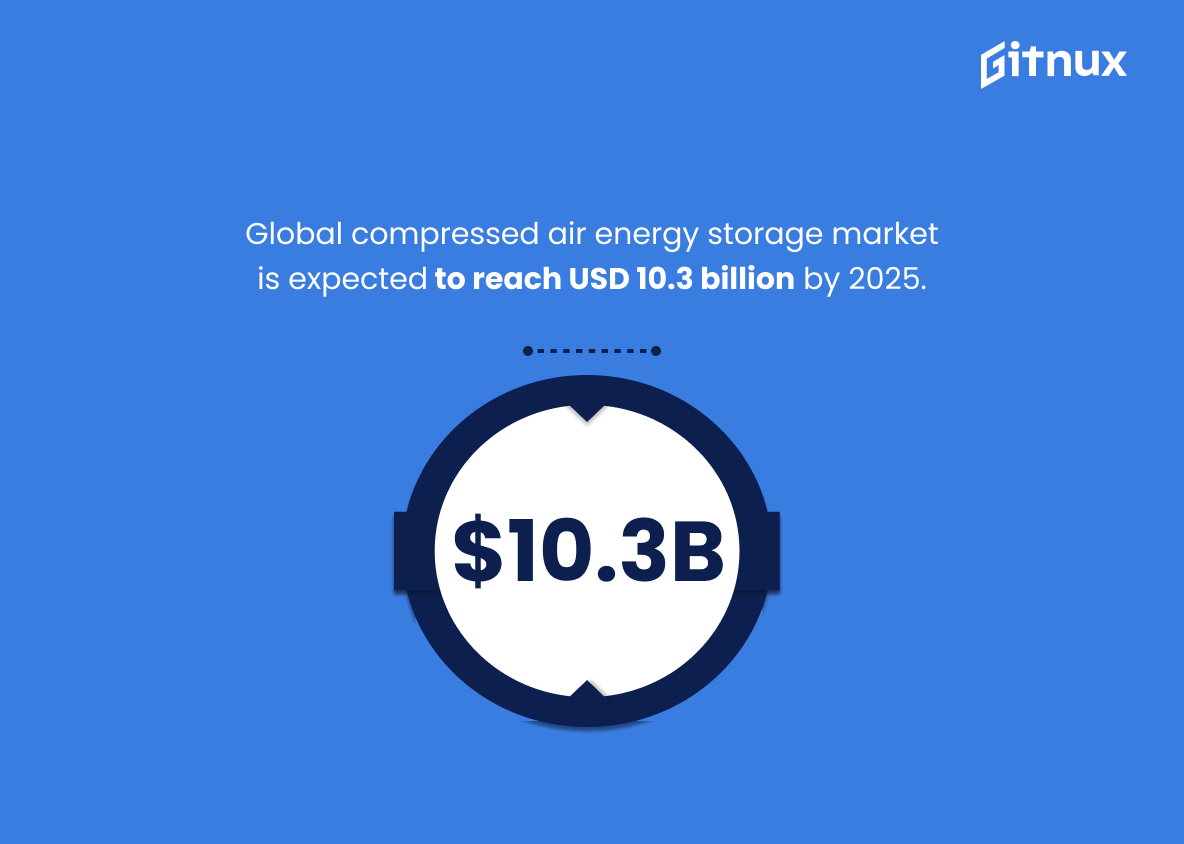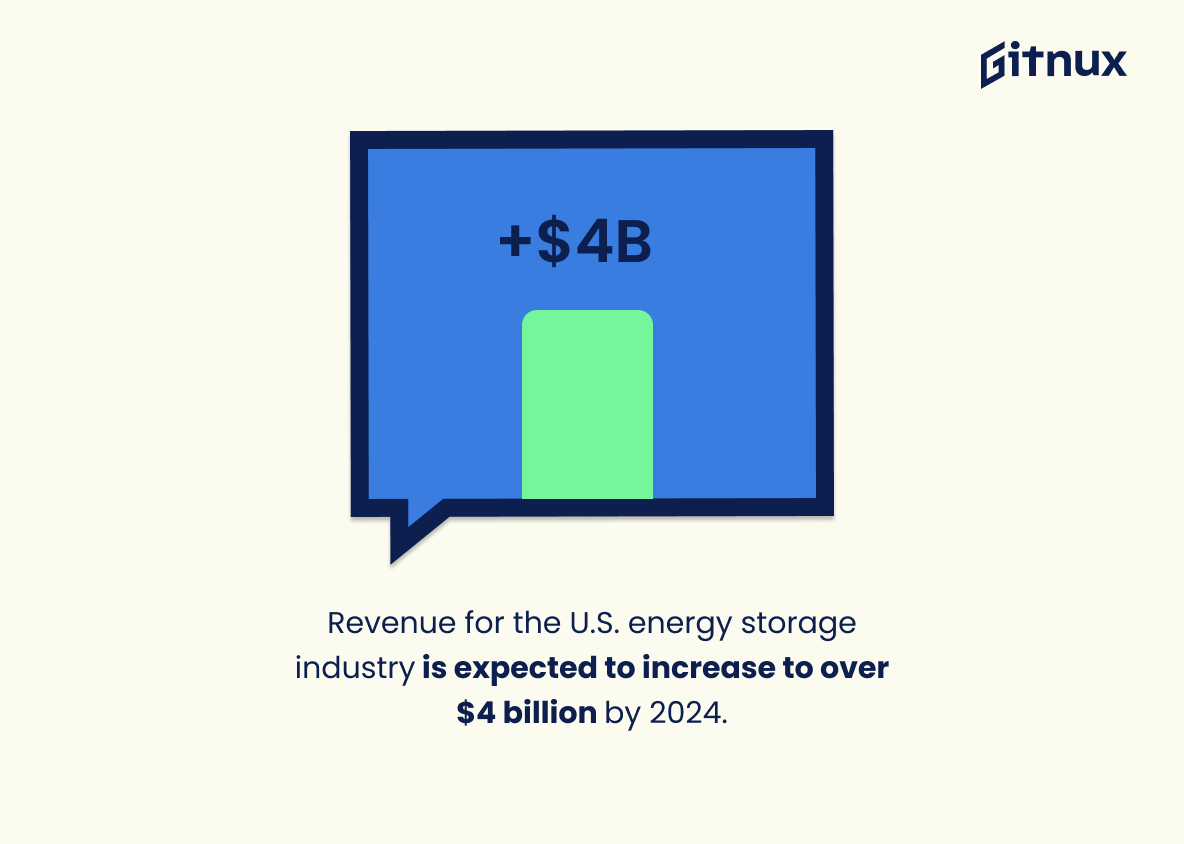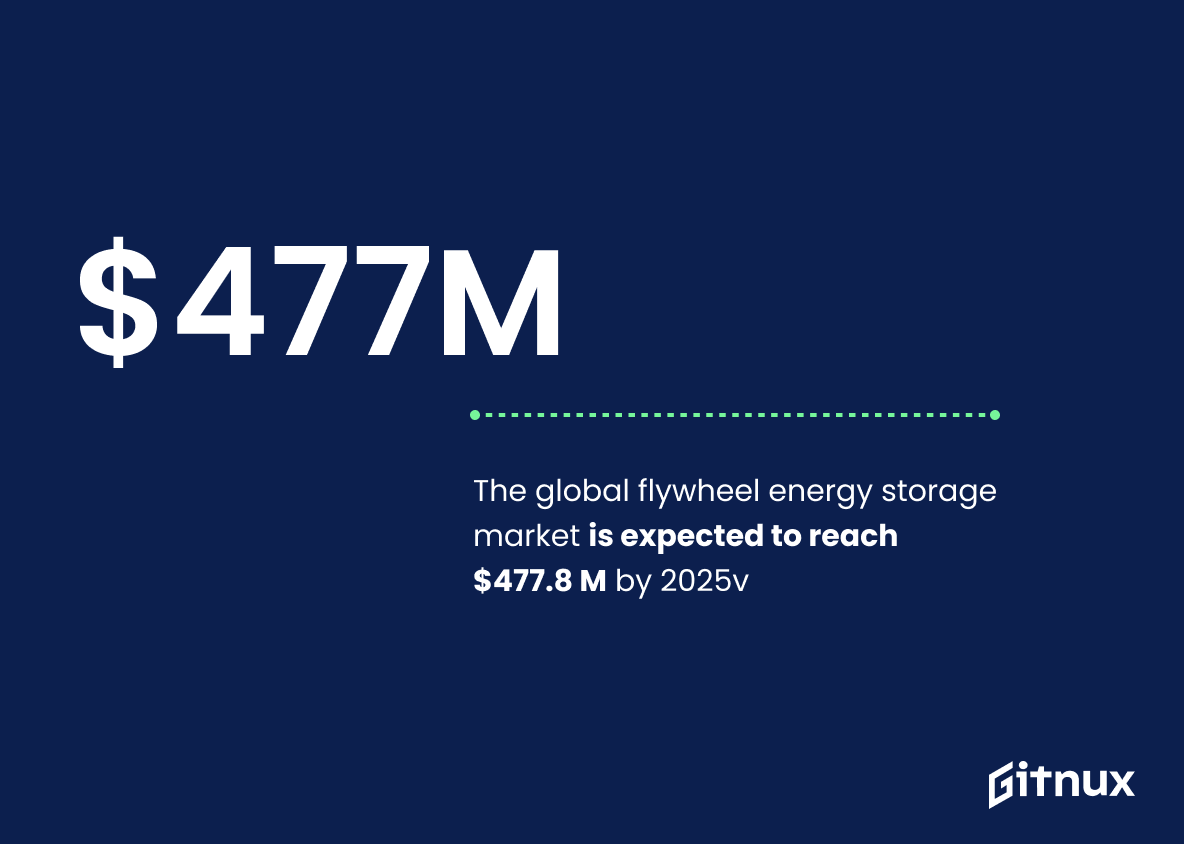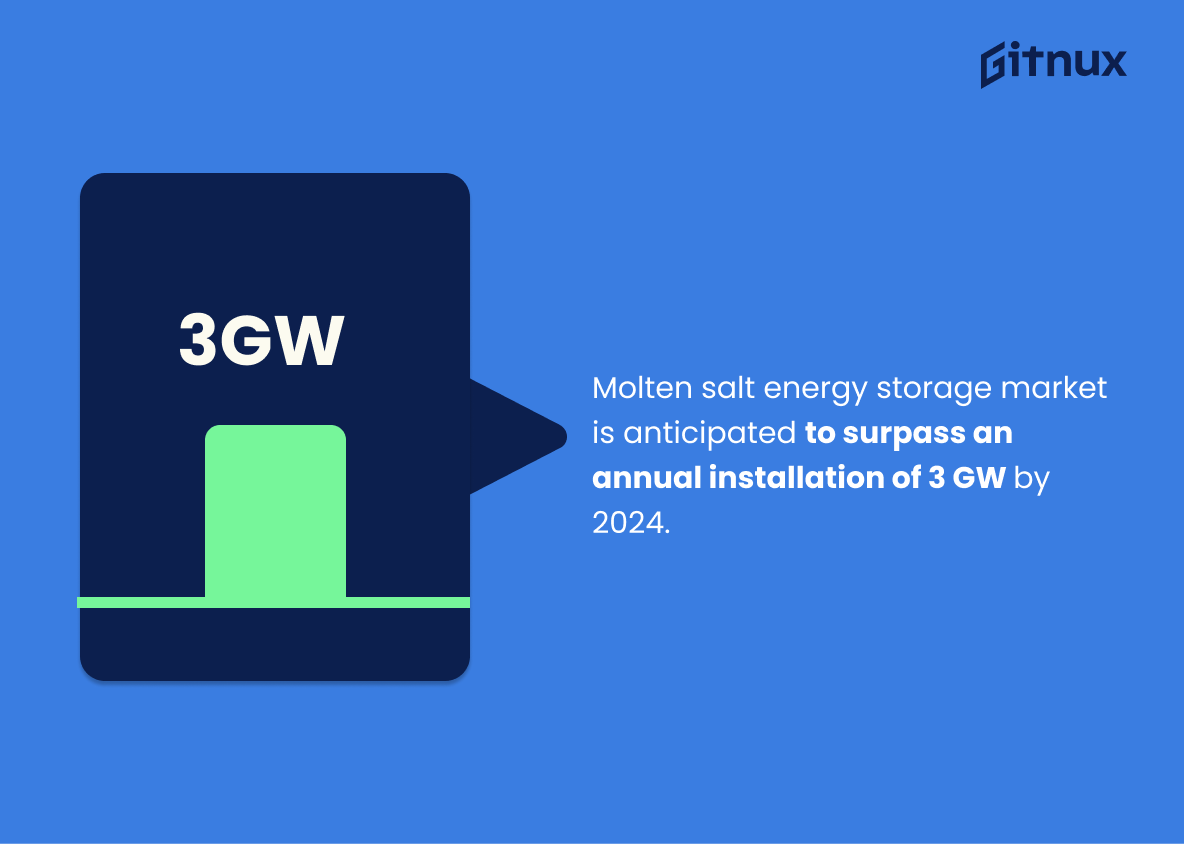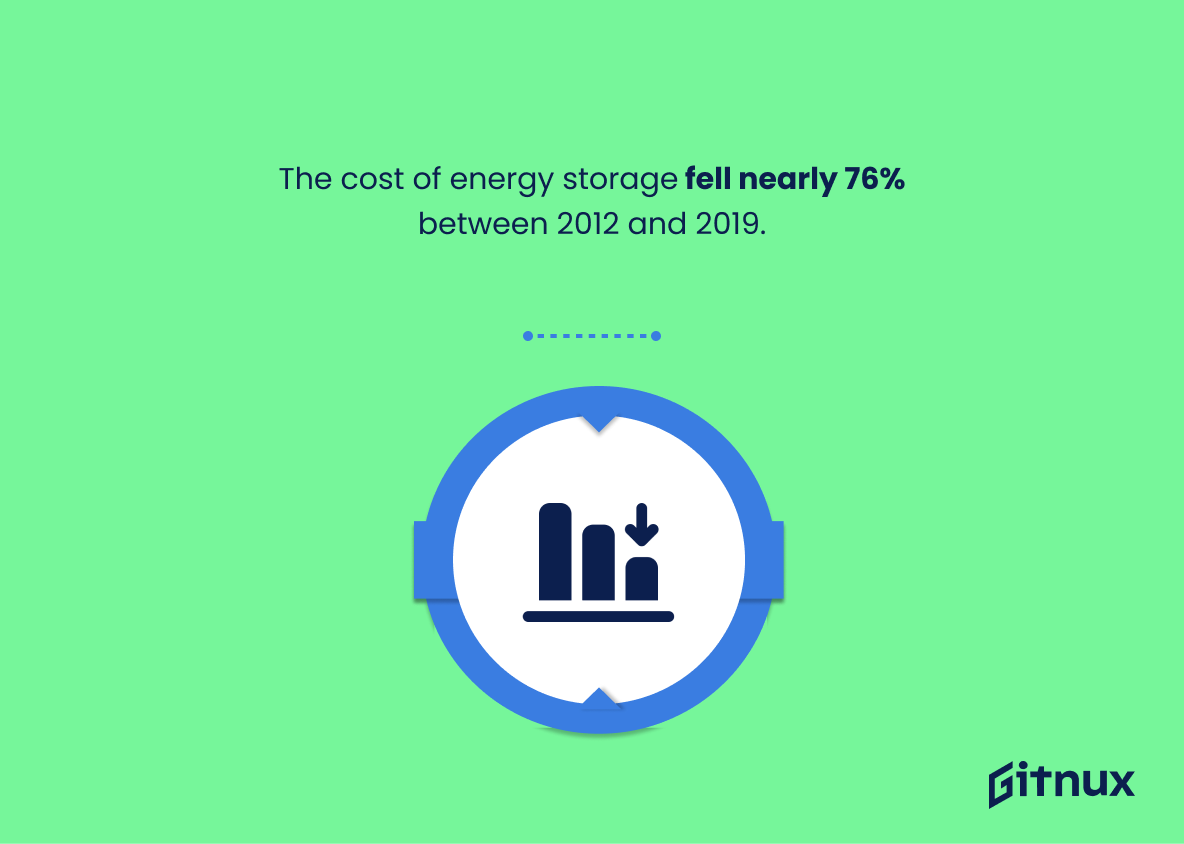In the swiftly evolving landscape of renewable energy, the Energy Storage Industry is gaining significant momentum. At its core, it represents a key ingredient in the ongoing transition towards cleaner and more sustainable energy solutions worldwide. However, understanding its growth, trends, and impact requires more than just a topical view; it demands a detailed inquiry illuminated by concrete data. This blog post intends to delve deep into the world of Energy Storage Industry Statistics, offering a comprehensive understanding of this vibrant sector. We will explore the market’s current state, growth prospects, regional breakdowns, leading players, and future potential. Join us in this numerical journey as we decode the relevance and implications of the industry drawn from its statistical backbone.
The Latest Energy Storage Industry Statistics Unveiled
The global energy storage market is expected to reach $546 billion by 2035.
Projected to surge to a staggering $546 billion by 2035, the global energy storage market graph paints a compelling vision of an industry on the brink of explosive growth. Nestled within a blog post on Energy Storage Industry Statistics, this projection not only delivers a hard number on the industry’s potential economic dimensions but can serve as a lighthouse, guiding investors and industry enthusiasts towards opportunities that await in the future. It teases out the emerging narrative of a sector propelled by technological innovation and increasing demand, offering a numeric testament to the critical role energy storage is set to play in our collective pursuit of a more sustainable and energy-efficient future.
The U.S. energy storage market experienced a 232% year-over-year growth from Q3 2019 to Q3 2020.
Witnessing a phenomenal 232% year-over-year growth from Q3 2019 to Q3 2020, the U.S. energy storage market has been bulldozing its way to the epicenter of the renewable energy sector. This explosive growth, exhilarating to say the least, unequivocally accentuates the escalating momentum and the colossal potential in the realm of energy storage. It underscores how rapidly the industry is transforming, possibly heralding a new epoch where renewable storage could be the path-breaking solution to planetary energy challenges. In the grand tapestry of energy storage industry statistics, this data point acts as a compelling narrative of a sector that is not just flourishing, but also taking significant strides towards sustainability, resilience, and technological innovation.
Global energy storage deployment was approximately 4.5 GW in 2019.
Examining the figure of global energy storage deployment, approximately 4.5GW in 2019, it’s akin to holding a mirror up to the growth trajectory of the energy storage industry. This data point reflects the significant strides made in the industry, serving as evidence of its escalating scale and its substantial contribution to the global energy sector. This statistic immediately echoes the increasing attention and resources being allocated towards storage solutions, offering a tangible measure of the industry’s advancement. In a world striving for greener energy practices, it’s a quantifiable testament to the industry’s role in powering our future.
China leads the world in energy storage capacity, with 8.3 GW installed by 2020.
Highlighting the fact that China spearheads the global energy storage capacity with a whopping 8.3 GW installed by 2020, certainly shines a spotlight on the country’s leading role in the energy storage industry. It emphasizes the significance of Chinese strategies and policies, which have evidently set the industry standard at a global level. When contemplating this crucial piece of data, we unravel the potential of energy storage for greener and more efficient power management worldwide. Moreover, it underlines China’s commitment to renewable energy and portrays a roadmap for other countries looking to ramp up their own energy storage efforts.
The use of lithium-ion technology in the energy storage industry will grow by approximately four times by 2030.
Wielding the lens of foresight, this predictive figure dramatically underscores the accelerated growth trajectory of lithium-ion technology in the energy storage industry. By 2030, the reliance on this groundbreaking technology is poised to quadruple, marking a tectonic shift in industry dynamics. Imagine, if you will, the energy storage landscape metamorphosing into a lithium-ion dominated field. This statistical prophecy not only charts a course for the future, but may also awaken potential investors or businesses to capitalize on lithium-ion technology’s meteoric rise. All considered, this statistic acts as a compass, guiding discerning industry observers towards emerging trends and game-changing technologies in the energy storage cosmos.
Residential energy storage deployments in the US grew 28% in Q3 2020 compared to the previous quarter.
This intriguing growth of 28% in residential energy storage deployments in the U.S. during Q3 2020 mirrors an evolving trend within the energy storage industry. As an influential pulse-check, this statistic punctuates not only the dynamic nature of the industry, but it also reflects the escalating acceptance and use of energy storage solutions in regular households. It’s akin to a story, where the plot is about the U.S. populace progressively turning towards self-sufficient energy models, a shift potentially triggered by a burgeoning desire for smooth power supply, or to mitigate the risks of power outages and grid instabilities. It also underscores the technological advancements and cost efficiencies achieved in the sector, convincing more homeowners to opt for energy storage installations. In essence, this statistic paints a vibrant picture of a market ripe with opportunities and on the fast track towards mainstream adoption.
Energy storage installations in India are projected to grow at a CAGR of 6.1% between 2020 and 2027.
Shedding light on the anticipated terrain of India’s energy storage landscape, the projected CAGR of 6.1% between 2020 and 2027 sets the stage for an influential narrative. This percentage reflects the steadily rising tempo of the sector and projects an escalating momentum in the years to come. It’s an intriguing puzzle piece in the grand tableau of energy storage industry statistics, implying an assertive thrust of India in the global energy storage orchestra. This growth rate also signifies the potential scope for business opportunities, further innovation and greener initiatives, becoming a significant strand in the story of the energy landscape reshaping the world’s largest democracy.
Europe’s energy storage industry is projected to reach 42 billion Euros by 2025.
The remarkable projection of Europe’s energy storage industry swelling to 42 billion Euros by 2025 provides fascinating insight into the industry’s future dynamics. This powerful figure represents the immense growth potential of this sector, highlighting that the energy storage domain is no longer a nascent industry but is dashing towards the forefront of the energy revolution. This acceleration, reflected in monetary terms, underscores the rising economic significance of storing renewable energy. By anchoring this anticipation in the backdrop of a blog post about Energy Storage Industry Statistics, we see a vivid snapshot of tomorrow’s energy market coming alive, reminding the reader of the incredible transformation underway in the world’s quest for green and efficient power solutions.
Australia’s energy storage market is predicted to grow over 30% from 2020 to 2026.
Forecasting a formidable growth of over 30% in Australia’s energy storage market from 2020 to 2026 punctuates the cresting wave of opportunity. This promising trajectory underscores the burgeoning importance of energy storage technologies in the land down under. The consequent maturation of the market is expected to create economic ripple effects and foster sustainable development. With the storage industry on a rapid ascent, investors and stakeholders can harness this kinetic energy. This enticing figure doesn’t merely add numerical flavour but also signifies the progressive energy landscape of Australia, shedding intelligent light on the expanding contours of our blog discussion on Energy Storage Industry Statistics.
Global compressed air energy storage market is expected to reach USD 10.3 billion by 2025.
As we peer into the future of the energy storage industry, an illuminating statistic casts a light on the growing potential of compressed air energy storage. It’s forecasted that by 2025, this global market is set to swell to a massive USD 10.3 billion. Why does this hold significance?
Let’s consider the larger picture here. This soaring figure is not just an indicator of growth, but a testimony to the industry’s relentless pursuit of sustainable and efficient storage methods. As a substantial component of the larger energy storage sector, compressed air energy storage’s expected growth underpins increased investment, innovation, and interest in this field.
In essence, it’s like the heartbeat hinting at the health of the system, reflecting deeper industry trends and dynamics. It’s associated with job creation, technology advancements, and also responds to the escalating demand for renewable energy sources. In a nutshell, this statistic isn’t just a number – it’s the score of the industry’s symphony, setting the rhythm of progress and amplification on the global stage.
The Middle East and Africa is projected to exhibit a CAGR of around 15% in terms of battery energy storage system between 2020 and 2026.
Highlighting the expected compound annual growth rate (CAGR) of around 15% for the battery energy storage system in the Middle East and Africa between 2020 and 2026 presents an intriguing forecast for the future. It draws attention to the burgeoning energy storage industry in these regions, underscoring their potential as emerging markets. This projection not only stimulates interest for potential investors but also underscores the need for strategies tailored to these markets. Furthermore, it could invite comparison with the CAGR of other regions, fostering an in-depth understanding of global trends and disparities within the Energy Storage Industry.
Revenue for the U.S. energy storage industry is expected to increase to over $4 billion by 2024.
Forecasting a surge in revenue to over $4 billion by 2024, the U.S. energy storage industry undeniably holds a promising future. On the canvas of a blog discussing Energy Storage Industry Statistics, this figure functions as a vibrant splash of color, depicting an industry on the rise.
This anticipated growth not only symbolizes the booming potential for job creation and economic stimuli, but also underlines the increasing acceptance and necessity of energy storage solutions in our modern world. Hence, it embodies a marker of triumph for sustainability enthusiasts and a beacon of opportunity for investors and stakeholders alike. Such an influential trend is therefore instrumental in painting a comprehensive and compelling portrait of the energy storage industry.
The global flywheel energy storage market is expected to reach $477.8 M by 2025
Highlighting the anticipated growth of the global flywheel energy storage market to $477.8 million by 2025 underscores the dynamic evolution and substantial potential within the energy storage sector. This projection not only exemplifies the increasing market demand but also signifies the significant advancements in energy storage technology. The meteoric rise underscores a trend towards renewable and efficient energy solutions that readers of this blog post should find highly compelling.
Molten salt energy storage market is anticipated to surpass an annual installation of 3 GW by 2024.
In the grand arena of the Energy Storage Industry, keep your eyes peeled for the soaring molten salt energy storage market. No longer a minnow in a shark-infested ocean, it’s ready to leave a solid footprint with an anticipated annual installation exceeding 3GW by 2024. Offering more than just numbers, this projection is the harbinger of potential shifts in the industry, demonstrating an enhanced reliance on efficient and sustainable storage methods. Essentially, this statistic serves as a torch, illuminating the path that industry trends and investments are likely to follow, making it a vital lighthouse for stakeholders navigating the turbulent waters of the Energy Storage industry.
The cost of energy storage fell nearly 76% between 2012 and 2019.
Highlighting this staggering 76% reduction in energy storage costs from 2012 to 2019, shines a spotlight on the rapidly accelerating affordability of this pivotal technology. In the realm of the Energy Storage Industry, such a precipitous drop in costs is akin to performance-enhancing fuel, driving increased investment, innovation, and implementation. The statistic serves as a beacon, illuminating the trajectory of the industry, indicating not just where it’s been, but perhaps more importantly, catalyzing excitement and expectations on where it’s heading. Taken in the context of an ever increasing need for effective, efficient, and environment-friendly energy solutions, this statistic is a clarion call, echoing the shifting tides in the energy landscape.
The U.S. energy storage market will grow 12-fold from 2019 levels, reaching 100 GW by 2030.
Unveiling a striking revelation of robust growth, the statistic showcases the impending transformation in the U.S. energy storage landscape. Going from merely a niche sector in the power industry to a cornerstone of the nation’s energy infrastructure, the U.S. energy storage market is poised to experience a massive increase. Set to soar from 2019 levels by a staggering 12-fold, it anticipates hitting the 100 GW mark by 2030.
The utter brilliance of this growth trajectory cannot be overstated in the context of an industry analytical post. Primarily, it underscores the vast potential and commercial opportunities hidden within this rapidly expanding sector. It indicates for entrepreneurs, investors, and stakeholders deepening interests in renewable energy sources and an escalating commitment to reduce carbon footprints.
Furthermore, this prospective leap illuminates the surge in demand for advanced energy storage systems, driven by a broader societal push towards renewable energy use and energy independence. This potentially rapid escalation may trigger a technology innovation race, compelling industry leaders to evolve and stay ahead of competitor offerings.
Ultimately, this astounding growth prediction sheds light on the future of the energy sector entirely, opening the door to game-changing renewable energy applications, grid reliability, and a sustainable energy economy, thereby underlining the blog post’s relevance and interest for a wide-ranging audience.
California currently leads the United States in the usage of storage, with over 3,200 MWh installed.
Drawing our attention firmly towards the center stage in the thriving energy storage panorama, California unfurls as the forerunner with an installation of over 3,200 MWh. This compelling view speaks a lot to the evolving landscape of energy storage industry nationwide. Not only does it illuminate the leading role California plays in utilizing energy storage, but it also stimulates reflections on strategies other states might adopt to bolster their own capacities. Furthermore, it highlights potential growth opportunities underlying the market sector and establishes a benchmark that other regions may aspire to emulate. This groundbreaking forefront of California in energy storage underscores the power of progressive policy frameworks and forward-thinking investment, forming a thrilling chronicle of industry achievements and future promises in the energy storage realm.
Conclusion
The continuous growth and innovation in the energy storage industry is solid evidence of its essential role in the transition towards renewable energy. As the industry statistics suggest, the demand for energy storage solutions is escalating across the globe, driven by the need for a resilient, efficient, and carbon-free grid. The industry’s challenges are substantial, but so too are the opportunities. As it continues to reach new milestones and break boundaries, the energy storage sector will continue to be a key pillar in our sustainable, energy-efficient future.
References
0. – https://www.www.lucintel.com
1. – https://www.www.utilitydive.com
2. – https://www.www.woodmac.com
3. – https://www.www.grandviewresearch.com
4. – https://www.www3.wipo.int
5. – https://www.about.bnef.com
6. – https://www.www.fluenceenergy.com
7. – https://www.www.forbes.com
8. – https://www.www.graphicalresearch.com
9. – https://www.www.researchdive.com
10. – https://www.www.globenewswire.com
11. – https://www.www.nyiso.com
12. – https://www.www.cnbc.com
13. – https://www.www.greentechmedia.com
14. – https://www.energypost.eu
15. – https://www.www.prnewswire.com
16. – https://www.www.iea.org
